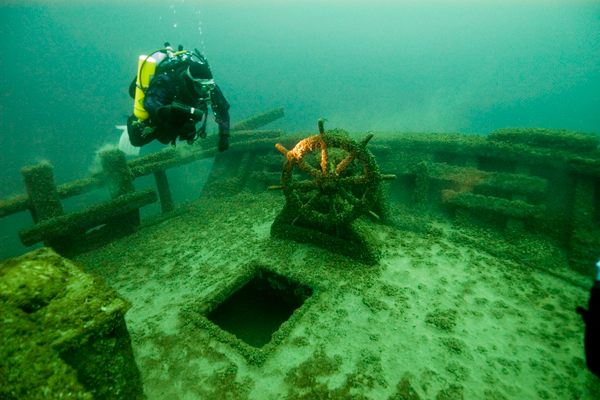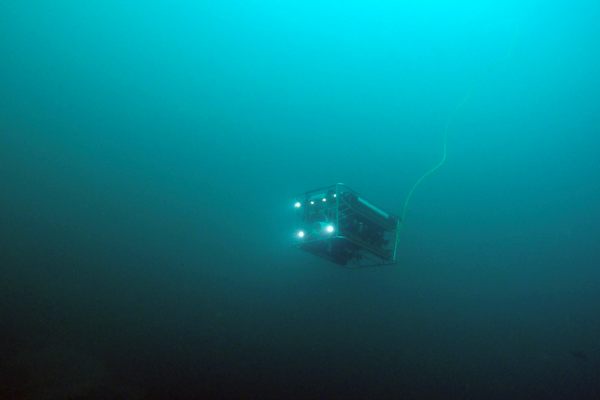Found: Two Shipwrecks Deep in a Shipwreck Graveyard
The Ohio and Choctaw sank in “Shipwreck Alley.”

In the late 1800s and early 1900s, in the heyday of steamboat shipping, Thunder Bay was one of the busiest and most dangerous ports on the Great Lakes. Sailing in and out of the port meant contending with tumultuous weather and rocky shoals, and so many ships went down that this area was called “Shipwreck Alley.”
This summer, researchers from the National Oceanic and Atmospheric Administration and the University of Delaware located two long-lost wrecks in the bay—the remains of the wooden bulk freighter the Ohio, which sank in 1894, and the steamer Choctaw, which sank in 1915.
The Ohio was built in 1873 and was carrying a load of grain when stormy weather and a narrow channel led to its demise. It was one of the earlier experiments with designing steamships specifically for the Great Lakes. The Choctaw represents a relatively rare boat design, which was a variation on the Great Lakes’ iconic “whaleback” steamers.
There are thought to be about 200 wrecks in the Thunder Bay National Marine Sanctuary, with about 100 yet to be discovered, reports the CBC. These boats were found as part of a shipwreck survey. At 300 feet deep, they’re unusually far down in the water; most of the known shipwrecks in the sanctuary were found at depths of less than 100 feet and almost all of them were discovered at depths of 200 feet or less.









Follow us on Twitter to get the latest on the world's hidden wonders.
Like us on Facebook to get the latest on the world's hidden wonders.
Follow us on Twitter Like us on Facebook